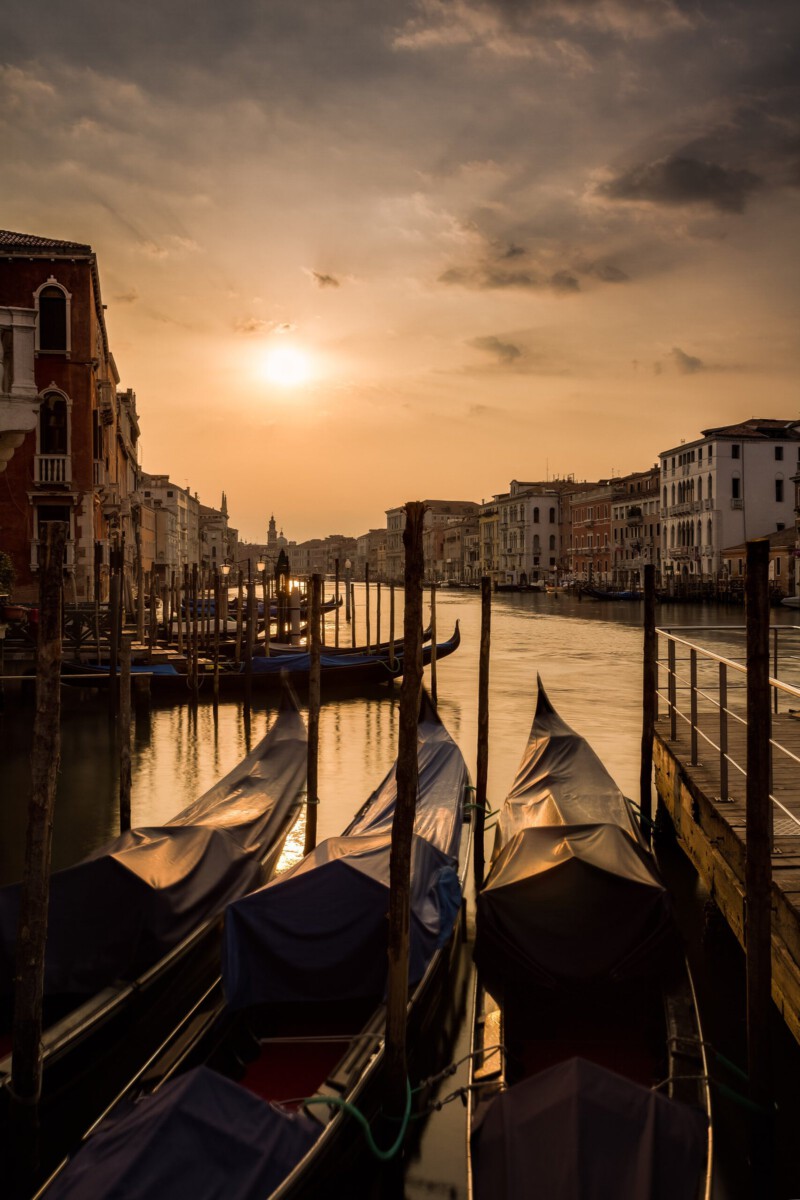Albarracín, Spain: A Time Capsule in Aragon

Tucked into the rugged hills of Spain’s Aragon region, Albarracín feels like a fairytale village frozen in time. Its winding lanes are lined with pinkish medieval houses and topped by ancient stone walls from the 10th century, which seem to whisper stories from centuries past. The town’s population is small, but according to the Spanish National Institute of Statistics, about 200,000 people—mostly Spaniards in the know—visit each year. Many travelers skip the well-worn paths and instead lose themselves among artisan boutiques, where pottery and woven textiles make for memorable keepsakes. The town’s dramatic cliffside views and peaceful ambiance offer a sharp contrast to Spain’s crowded coastal cities. Even during peak season, it’s not unusual to find a quiet corner to yourself. Locals are fiercely protective of Albarracín’s secrets, sharing tips only with visitors who show a genuine interest in its history and traditions.
Gjirokastër, Albania: Stone City of the Balkans

Gjirokastër is a place where time seems to move more slowly. With less than 100,000 tourists a year, according to the Albanian Institute of Statistics, it remains a peaceful haven in southern Albania. The city’s striking Ottoman-era homes, built entirely from stone, climb up steep hillsides under the shadow of a massive fortress. The Gjirokastër Castle, perched above the town, offers breathtaking panoramic views of the Drino Valley and is a must-see for anyone looking to capture the town’s essence. Locals often gather in the bustling bazaar, where you can sample byrek—savory pies—and sip Turkish coffee. The city’s quiet streets and centuries-old traditions have earned it UNESCO World Heritage status and a special place in the hearts of Albanians. Here, visitors are welcomed as friends, and the aroma of fresh bread and grilled meats fills the air.
Kotor, Montenegro: Fjords and Forgotten Villages

While Kotor’s old town is no longer a complete secret, its quiet corners and nearby villages still are. The dramatic Bay of Kotor, with its fjord-like twists, is home to sleepy hamlets like Perast, where time stands still among baroque churches and crumbling palaces. The island church of Our Lady of the Rocks, accessible only by boat, is a peaceful sanctuary floating above the blue water. Statistics from the Montenegrin Tourist Organization reveal that Kotor receives about 1.5 million visitors annually, but the vast majority never stray beyond the city walls. Locals know the best swimming spots and hiking trails, many of which offer serene vistas without a single tour group in sight. Sunset here feels magical, with the mountains casting long shadows over the bay. Even in the height of summer, you can find a quiet café where the only sound is the clink of coffee cups.
Visby, Sweden: Medieval Marvel on Gotland

On the windswept island of Gotland, Visby’s storybook streets and ancient ruins offer a glimpse into Sweden’s Viking and Hanseatic past. The town’s 13th-century walls, still nearly intact, encircle a maze of cobblestone alleys and rose-filled gardens. Every summer, around 1 million people journey here, as reported by the Gotland County Council, but most stick to the town center. Locals, however, escape to wild beaches and pine forests, or join the festivities during Medieval Week, when knights and minstrels take over the streets. Secluded hiking trails meander along cliffs and through meadows, offering peace even when the town is bustling. You’re just as likely to stumble upon a quiet café serving cinnamon buns as you are a mysterious rune stone. The sense of community runs deep, and visitors who linger often find themselves welcomed like old friends.
Matera, Italy: City of Stone and Shadows

Matera, with its haunting cave dwellings known as “Sassi,” is one of Italy’s oldest inhabited settlements. The town has seen a surge in tourism—up 50% in recent years according to the Italian National Institute of Statistics—after serving as a backdrop for major films. Yet many visitors miss the quieter caves and hidden stairways that twist through its ancient neighborhoods. The city’s history is etched into every stone, and the local food is a revelation: think hearty Lucanian stews and fresh, crusty bread. Art galleries and small theaters, run by passionate locals, bring the city’s creative spirit to life. Matera’s maze-like alleys are perfect for wandering without a map, and you’re likely to find a panoramic viewpoint without another soul in sight. The soft glow of lanterns at dusk gives the city a dreamlike quality, making it easy to see why Matera is treasured by those who call it home.
Terschelling, Netherlands: Island of Quiet Wonders

Far from the bustling cities of Amsterdam and Rotterdam, Terschelling is a windswept island where nature reigns supreme. According to the Dutch Central Bureau of Statistics, it receives about 300,000 visitors each year, yet its broad sandy beaches and nature reserves seem to swallow crowds whole. The island is famous for the Oerol Festival, where artists transform beaches, forests, and dunes into stages for performances and installations. Outside festival season, you can hike through marshlands teeming with rare birds or cycle along endless paths bordered by wildflowers. The locals are proud of their island’s traditions, from wooden boat building to oyster farming, and are eager to share stories with curious travelers. Even in summer, you’ll find secluded stretches of beach where the only footprints are your own. Terschelling’s peaceful vibe makes it a favorite among Dutch families seeking a break from city life.
Piran, Slovenia: Venetian Whispers by the Adriatic

Piran is a jewel on Slovenia’s tiny coast, where Venetian facades gleam in the sunlight and the scent of salt hangs in the air. With around 250,000 annual visitors, according to the Slovenian Tourist Board, it feels lively but never crowded. Locals flock to Tartini Square, where street musicians play and fishermen sell their catch just steps from the sea. Beyond the busy harbor, hidden coves and quiet salt pans offer a different side of Piran—one that’s unchanged for centuries. The local seafood is legendary, with family-run restaurants serving calamari and scampi fresh from the Adriatic. Small art galleries and boutique shops dot the old town, tucked away behind arched doorways. As evening falls, the pastel buildings glow, and the town’s relaxed pace invites you to slow down and savor every moment.
Civita di Bagnoregio, Italy: The Dying Town’s Living Soul

Civita di Bagnoregio is perched high above the Italian countryside, its crumbling cliffs earning it the nickname “the dying town.” With only 100,000 annual visitors, according to the Italian Ministry of Cultural Heritage, it remains blissfully free of crowds. The village is accessible only by a footbridge, adding a sense of adventure to every visit. Narrow lanes wind past stone houses and flower-filled balconies, leading to viewpoints that stretch across green valleys and vineyards. Locals are fiercely loyal to their traditions, and visitors can sample homemade pasta and local wines in family-run trattorias. Hiking trails in the surrounding hills reveal ancient Etruscan caves and hidden orchards. The pace of life is slow, inviting travelers to linger and soak in the beauty of a place where history feels alive with every step.
Sighisoara, Romania: Dracula’s Colorful Birthplace

In the heart of Transylvania, Sighisoara stands as one of Europe’s best-preserved medieval towns. Its pastel towers and winding streets transport visitors to another era, with the birthplace of Vlad the Impaler—a.k.a. Dracula—at its center. The Romanian National Institute of Statistics reports around 150,000 annual tourists, yet the surrounding countryside and tiny villages remain almost untouched by outsiders. The Clock Tower, rising above the old town, offers sweeping views of red-tiled rooftops and rolling hills. Local artisans sell hand-painted ceramics and woodcarvings in the bustling market square. Nearby, rustic guesthouses offer home-cooked meals and a taste of rural Romanian hospitality. Sighisoara’s magical ambiance comes alive at night, when lanterns flicker on the cobblestone lanes and the town’s legends seem just a little closer to the surface.
Ronda, Spain: Bridging History and Nature

Ronda sits dramatically atop a deep gorge, its ancient bridges connecting the old and new parts of town. According to the Andalusian Tourism Agency, about 1 million people visit each year, but most stick to the main sights. Locals, however, know secret paths that lead to hidden waterfalls, olive groves, and quiet viewpoints away from the crowds. The town’s Moorish heritage is evident in its architecture and winding streets, while the surrounding hills are laced with hiking trails and vineyards. Away from the busy center, small taverns serve local wines and tapas, often accompanied by impromptu flamenco performances. The pace of life slows, allowing visitors to savor the stunning views and warm hospitality. Ronda’s blend of history, culture, and natural beauty makes it a favorite among Spaniards who prefer to keep its best secrets to themselves.



